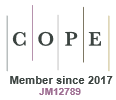The reliability of latex weak links on radio collars used to track eastern grey kangaroos (Macropus giganteus)
Tian Chen A * , Naomi Davis B C , Pam Whiteley A , Lee F. Skerratt A , Charles El-Hage A and Jasmin Hufschmid A
A * , Naomi Davis B C , Pam Whiteley A , Lee F. Skerratt A , Charles El-Hage A and Jasmin Hufschmid A
A
B
C
Abstract
Telemetry neck collars are commonly used to collect spatial data on free ranging animals. Two major challenges in application are entanglement prevention and retrieval of the collars after the study. Weak links made of a degradable material that breaks down while deployed on the animal are a potential solution to reduce entanglement and prevent the need to capture or sedate animals for retrieval. However, weak links can perform inconsistently depending on an animal’s behaviour and environmental factors such as heat and humidity. A study of disease in eastern grey kangaroos (Macropus giganteus) in Victoria, Australia, provided an opportunity to test the performance of 35 radio collars fitted with a latex weak link between May and July 2022. At the conclusion of the study, 20 collars were manually removed from euthanised animals, and 15 detached in the field; all of these broke at the weak link. Of the 15 detached collars, 10 dropped from live animals due to degradation between 106 and 208 days (mean = 147 days) after deployment, four kangaroos were found dead and their collars were retrieved nearby and one dropped immediately after attachment. The performance of the device in this study demonstrates the utility of weak links as a cheap and simple remote detachment tool to prevent entanglement and achieve remote detachment of neck collars during animal tracking studies.
Keywords: latex, macropod, radio collar, spacer, telemetry, tracking, weak-link, welfare.
References
Australia Government Bureau of Meteorology (2023) Climate data online. Available at http://www.bom.gov.au/climate/data/index.shtml?bookmark=200 [accessed 9 June 2023]
Brian JK, Michael NC (1987) An improved radio transmitter harness with a weak link to prevent snagging. Journal of Field Ornithology 58, 73-77.
| Google Scholar |
Buil JMM, Peckre LR, Dörge M, Fichtel C, Kappeler PM, Scherberger H (2019) Remotely releasable collar mechanism for medium-sized mammals: an affordable technology to avoid multiple captures. Wildlife Biology 2019, 1-7.
| Crossref | Google Scholar |
Casper RM (2009) Guidelines for the instrumentation of wild birds and mammals. Animal Behaviour 78, 1477-1483.
| Crossref | Google Scholar |
Cawthen L, Munks S (2011) The design and testing of linen thread weak-links in brushtail possum radio-collars. Australian Mammalogy 33, 33-35.
| Crossref | Google Scholar |
Chen T, Whiteley P, Skerratt LF, El-Hage C, Ploeg R, Davis N, Hufschmid J (2024) Poor survival rate of eastern gray kangaroos (Macropus giganteus) affected by chronic phalaris toxicity. Journal of Wildlife Diseases 60, 903-911.
| Crossref | Google Scholar | PubMed |
Cowan M, Blythman M, Angus J, Gibson L (2020) Post-release monitoring of western grey kangaroos (Macropus fuliginosus) relocated from an urban development site. Animals 10, 1914.
| Crossref | Google Scholar |
De Cena F, Ciuti S, Apollonio M (2011) Evaluation of an expandable, breakaway radiocollar for subadult cervids. Hystrix 22, 341-347.
| Crossref | Google Scholar |
Garshelis DL, McLaughlin CR (1998) Review and evaluation of breakaway devices for bear radiocollars. Ursus 10, 459-465.
| Google Scholar |
Hellgren EC, Carney DW, Garner NP, Vaughan MR (1988) Use of breakaway cotton spacers on radio collars. Wildlife Society Bulletin 16, 216-218.
| Google Scholar |
Karimi-Avargani M, Biria D, Dehghanifar S, Bazooyar F, Skrifvars M (2025) Accelerating degradation of natural rubber latex gloves by a consortium of microorganisms in an agricultural soil sample. International Journal of Environmental Science and Technology 22, 2601-2612.
| Crossref | Google Scholar |
Matthews A, Ruykys L, Ellis B, Fitzgibbon S, Lunney D, Crowther MS, Glen AS, Purcell B, Moseby K, Stott J, Fletcher D, Wimpenny C, Allen BL, Van Bommel L, Roberts M, Davies N, Green K, Newsome T, Ballard G, Fleming P, Dickman CR, Eberhart A, Troy S, McMahon C, Wiggins N (2013) The success of GPS collar deployments on mammals in Australia. Australian Mammalogy 35, 65-83.
| Crossref | Google Scholar |
Rafiq K, Appleby RG, Edgar JP, Jordan NR, Dexter CE, Jones DN, Blacker ARF, Cochrane M (2019) OpenDropOff: an open-source, low-cost drop-off unit for animal-borne devices. Methods in Ecology and Evolution 10, 1517-1522.
| Crossref | Google Scholar |
Rayner K, Sullivan M, Sims C, Cowen S (2022) A pain in the neck: weak links are not a reliable release mechanism for radio-collars. Australian Mammalogy 44, 117-125.
| Crossref | Google Scholar |
Thalmann S (2013) Evaluation of a degradable time-release mechanism for telemetry collars. Australian Mammalogy 35, 241-244.
| Crossref | Google Scholar |
Varkey JT, Augustine S, Thomas S (2000) Thermal degradation of natural rubber/styrene butadiene rubber latex blends by thermogravimetric method. Polymer - Plastics Technology and Engineering 39, 415-435.
| Crossref | Google Scholar |
Yousif E, Haddad R (2013) Photodegradation and photostabilization of polymers, especially polystyrene: review. SpringerPlus 2, 398.
| Crossref | Google Scholar |


